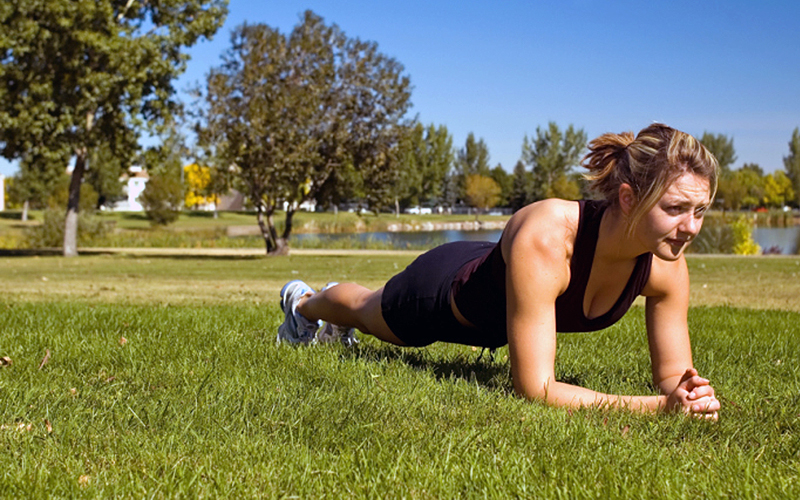
by guest blogger Greg Hoak, MS, CSCS
In my experience as a trainer, I’ve noticed that people tend to overwork the muscles that they can see in the mirror—the chest, abs, arms, and quads.
These muscles usually get the most attention in a self-designed exercise routine, while your upper, mid, and low back areas are all too often neglected.
The combination of ignoring these muscles, combined with the fact that people spend so much time sitting, often leads to or aggravates muscle imbalances such as upper crossed syndrome, a prevalent postural problem characterized by rounded shoulders and forward head posture. This common posture issue can lead to muscle and joint pain and shallow breathing.
To help strengthen some of the muscles that you may have been ignoring, focus on working the following exercises priorities into your fitness regimen:
1. Focus on your rear delts.
It’s extremely common to pump up the reps when doing chest exercises. After all, people love their push-ups. But in actuality, what most exercisers need are stronger rear deltoids to help adjust their posture and feel better. Try these exercises to start strengthening your rear, AKA posterior, deltoids.
2. Make scapula stabilization a priority.
Poor posture from too much sitting can throw your shoulder complex into a state of dysfunction. To help remedy this, it’s vital to do the right strengthening exercises to improve shoulder blade function.
“When it comes to the shoulders, the scapula [shoulder blade] is key,” says Jason Phillips, MD, orthopedic surgeon at Phillips Brayford Orthopaedics. “Your scapula serves as the origin for your rotator cuff and periscapular muscles. As such, maintaining a healthy scapula can really cover up and minimize rotator cuff problems.”
Dr. Phillips notes that seated rows and pull-ups build a strong base around the shoulder by helping to stabilize the scapula.
If you have a hard time doing pull-ups, as many people do, you can supplement with assisted pull-ups or lat pull downs.
3. Don’t neglect your low back.
If you’re into fitness or ever had gym class in school as a child, there’s a good chance that you’ve done thousands of sit-ups, crunches, or other abdominal exercises. But how many lower back extensions do you have under your belt?
In most workouts that I observe in the gym, I see people treating the lower back as an afterthought—usually right up there with proper stretching. People often attack the abs but have a tendency to neglect the lower back. This results in a weak lower back, which is one of the main triggers for lower back pain.
When I tell people to work more on their core, they often assume that I’m referring to their abdominal muscles. Although your abs play a huge part in stabilizing your spine when exercising, there’s more to the core than that.
In order to make sure my clients are working enough on their cores and lower backs, I include the following exercises about halfway through the workout. That way it isn’t one of those exercises always written in on the end of the workout that often gets less attention or skipped altogether.
These exercises are three good ways to strengthen and stabilize the lower back:
- Planks
- Lower Back Extensions
- Bridges
- Supermans (see video)
 Greg Hoak, MS, CSCS, is the developer of FarmerFit and has been a professional fitness trainer for 12 years. He earned an exercise science degree from Arizona State University and a master’s degree in exercise science from California University of Pennsylvania. He’s trained professional athletes and mixed martial arts fighters, amateur athletes, and everyday people. He’s also a sustainable farmer at Potter’s Farm in Pine Grove, Pennsylvania, where he and his wife run a community-supported agriculture program, growing vegetables and tending to egg-laying hens raised on pasture.
Greg Hoak, MS, CSCS, is the developer of FarmerFit and has been a professional fitness trainer for 12 years. He earned an exercise science degree from Arizona State University and a master’s degree in exercise science from California University of Pennsylvania. He’s trained professional athletes and mixed martial arts fighters, amateur athletes, and everyday people. He’s also a sustainable farmer at Potter’s Farm in Pine Grove, Pennsylvania, where he and his wife run a community-supported agriculture program, growing vegetables and tending to egg-laying hens raised on pasture.




No comments yet.